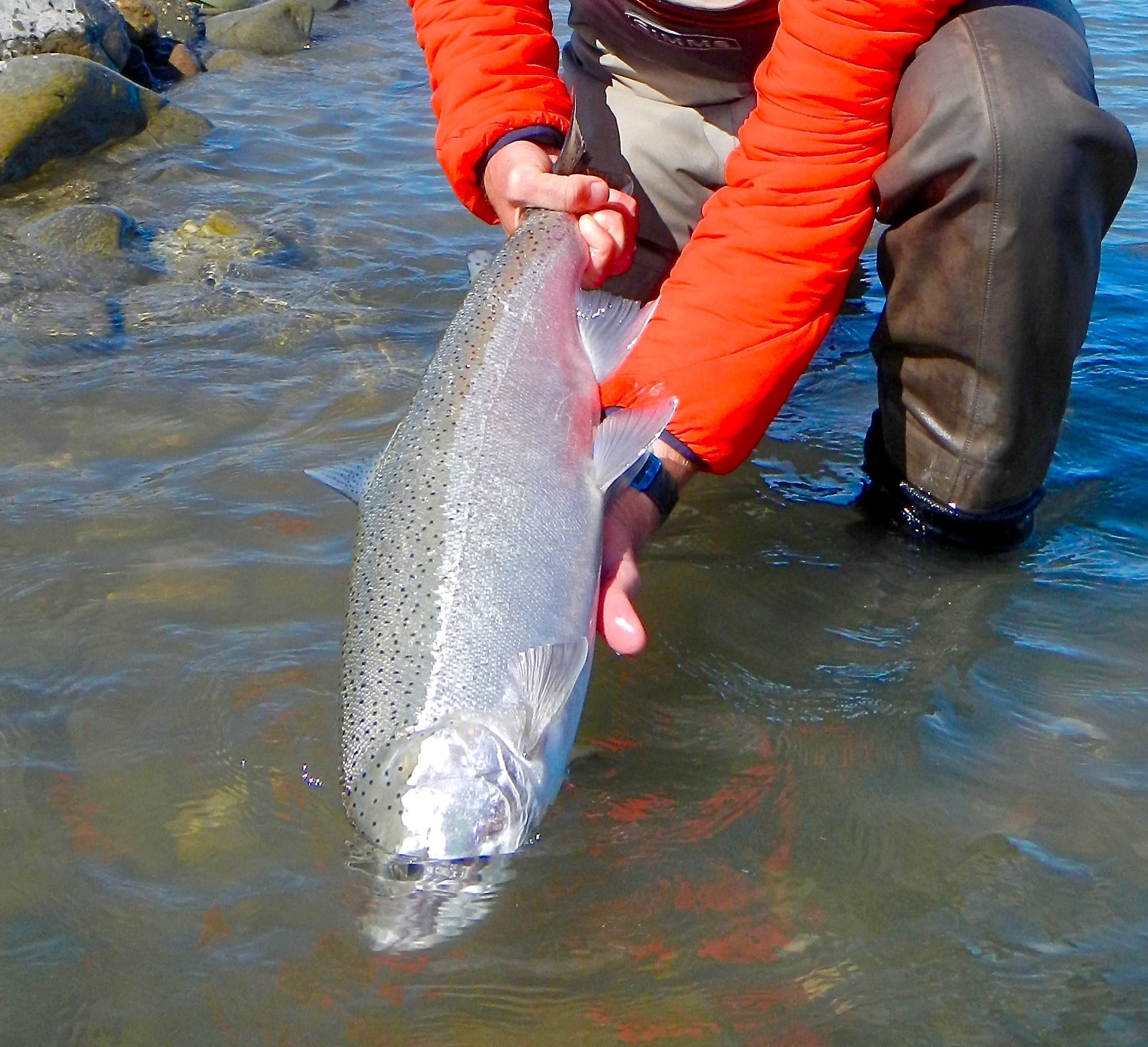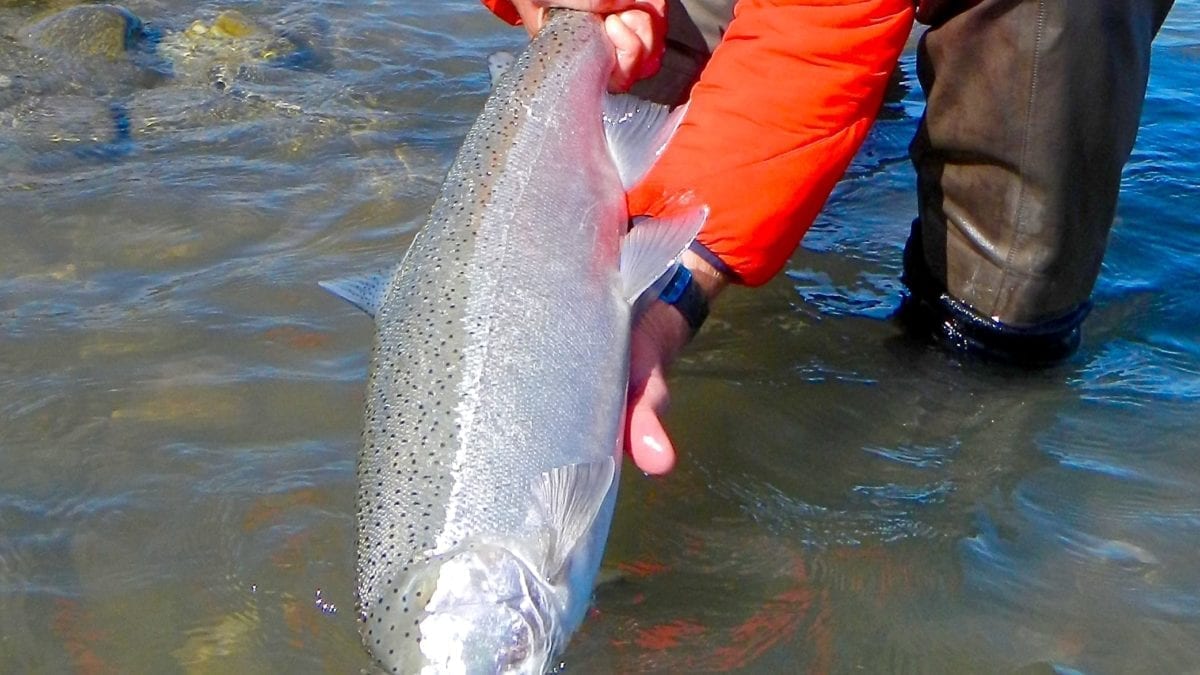“Wild and Wet Winter” Wednesday Wisdom on California Winter Steelhead

Welcome to a “Wild and Wet Winter” … a California Trout, Keepemwet Fishing, and Lost Coast Outfitters initiative celebrating California’s wild winter steelhead.
Our goals are to build awareness of the environmental threats and opportunities impacting sustainable population recovery, as well as, to educate the angling community on the rationale for Keepemwet fish handling practices, and to encourage anglers to follow them.
Each Wednesday through the end of the winter season, we’ll focus on one or more aspects impacting winter run steelhead. You’ll hopefully better understand the winter run life cycle and population distribution, top three threats … (major dams, estuary alteration, and agriculture), and conservation efforts ranging from the Smith to the South Fork Eel.
We’ll help you understand ways in which anglers can minimize their effect on fish. We’ll provide insight into the science supporting Keepemwet practices. You’ll understand the impact of landing time, landing practices (netting versus tailing), and barbed hooks, what happens when you take fish out of the water, how long is too long for a fish to be out of the water (and why), thoughts on ways to hold fish to minimize harm, and lastly how to take pictures that celebrate your catch while keeping fish wet.
Hopefully, we’ll help minimize fish mortality and the negative impact some practices can have on spawning efficacy.
See you next Wednesday and have a Wild and Wet Winter.
To learn more, visit:
CalTrout: to learn more about California winter run steelhead
Keepemwet Fishing: to learn more about Keepemwet principles
Lost Coast Outfitters: blog on many things fly fishing related





